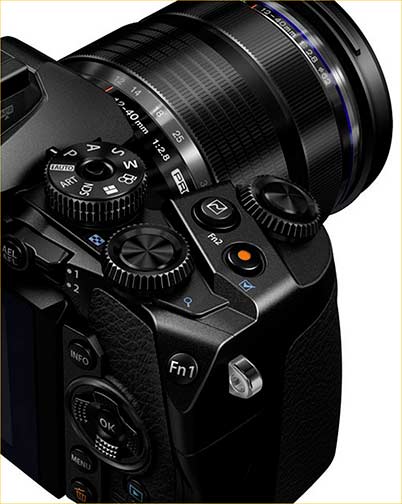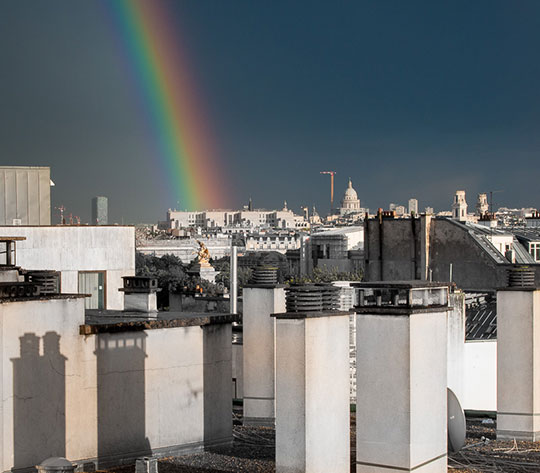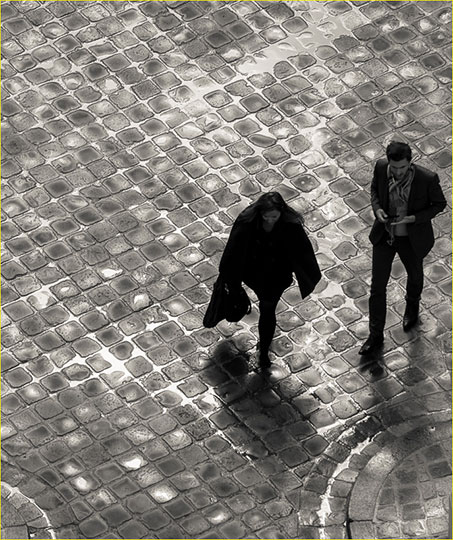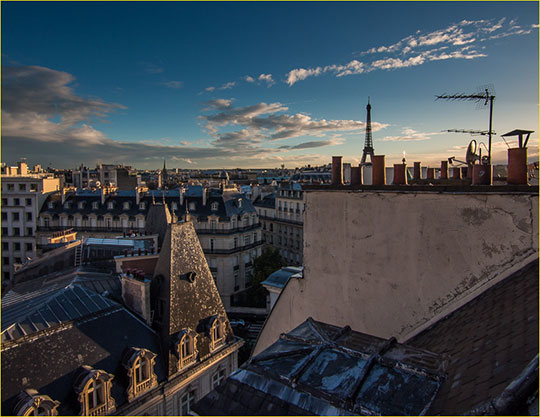This article will be updated daily with new observations and images taken
with the E-M1 during the week of September 15 – 22, 2013 while I am visiting Paris.
Updates will appear further down the article, and will be dated.
Links to these updates will appear here as they are published.

This review of the newOlympus E-M1 (B&H Link)is being written roughly over a one week period in mid-September, 2013. The E-M1, Olympus’ newest flagship camera, has just been announced, and is scheduled to ship in early October. Since my camera reviews are not lab tests, but rather field reports, I always prefer to do them when I am in an interesting locale, and when I have the time to really get out and shoot and also become familiar with a camera’s features and foibles in the real world. This was the case recently when I was able totest the upcoming Panasonic GX7(B&H Link) in San Miguel de Allende, Mexico for a week in August.
Olympus in Paris
Once every five years or so my wife and I go to Paris for a week to celebrate our anniversary, and to meet up with old friends from London. Their anniversary also falls the same week. This time Olympus offered me the loan of a pre-release E-M1 just two days before I left for my Paris trip. I had already packed my shoulder bag with theSony RX1(B&H Link) andJVC PX100(B&H Link) camcorder, the latter because I planned on shooting video as well as stills, and because Blackmagic has yet to ship my Pocket Camera – which I had hoped to have in time for this trip. (Their loss, Olympus’ gain).
On a trip like ours, to Paris in the Fall, which usually entails a lot of walking, gallery visiting, people watching (and of course trying good restaurants and cafes) traveling light is everything. Though as always there certainly is a photographic agenda, it’s mainly about being on vacation. A heavy, bulky camera bag is the last thing I want hanging over my shoulder for 10 hours a day. That’s why a small camera like the RX1 and similarly a small camcorder were already in my smallDomke satchel bag.
But two days before our flight I unpacked these and replaced them with the new Olympus E-M1 and three lenses; thePanasonic X-Vario 12-35mm f/2.8, theX-Vario 35-100mm f/2.8, and thePanasonic 7-14mm f/4. These three lenses give me a range from 14mm – 200mm equivalent. That, plus an extra battery, a Fader (Vari-ND for shooting video in bright light), and a faw small accessories was all that would fit in the very small Domke.
At the last minute I grabbed thePanasonic 100-300mm. While, slow, and not the sharpest knife in the drawer, it is a joy to hold an equivalent 200-600mm in the palm of ones hand, and I have gotten more good urban street shots with this lens that I can count.Image before pixel peeping, is my motto. I also took theVoigtlander 25mm f/0.95(B&H Link) for night shooting.
I put these two in a lens wrap, and then in my checked luggage. They’ll get used in Paris, I’m sure, and with the camera itself on a wrist strap, there’ll be room for them in the satchel bag when I’m out shooting.
Why not an Olympus lens or two, and specificially why not the also newOlympus 12-40mm f/2.8? I have seen the upcoming 12-40mm and it looks to be a great lens. But unfortunately it was not available for testing, as it won’t ship until late November.
By the way, the reason for my owning the two Panasonic X lenses is because they are stabilized and will perform with IS on my upcomingBlackmagic Pocket Cinemacamera. Olympus lenses don’t have built-in stabilization, relying instead on their excellent 5-Axis in-body stabilization.
For me personally, this means that while I may find myself using an Olympus camera, when stabilization is needed for video on the BMCC, the Panys are my go-to lenses. Just a matter of personal needs.
Maple X. Paris, France. September, 2013
Olympus E-M1 with Lumix X 12-35mm f/2.8 @ ISO 200
The Basics
It’s hard to keep up with all the new models and specs, and since manufacturer’s web sites list all the pertinant info, there’s no point on repeating them here. This page is going to be long enough as it is.
The headline features are…
– 16.3 Megapixel CMOS sensor (new design)
– on-chip phase detection AF, as well as contrast detection AF, so that older Zuiko Four Thirds lenses are support with fast autofocusing
– new body design with built-in grip and more direct controls
– bigger, brighter, higher resolution EVF
– tilting LCD
– frame rates to 10FPS, shutter to 1/8000 sec and ISO to 25,600
– rugged waterproof, dustproof, freezeproof magnesium body
Sound pretty good? The E-M1 may not have every bell and whistle that photographers might want, but it does pack an awful lot into a relatively small, solid package.
The price? $1,399 body only when it becomes available in early October.

OK – How does it Compare to the Panasonic GX7?
Good question. Glad you asked. I was expecting it.
Since I have already have spent a couple of weeks with theGX7 (B&H Link) and recently published myfield report, it should be straightforward to compare it and the E-M1. Yes? Well, actually not so much.
Firstly, I no longer have my review sample of the GX7, and so a side-by side, and an ability to compare operation and results isn’t possible at the moment. But, by mid-October both cameras will be shipping and a chance to spend some time with both of them in hand simultaneously will likely present itself. In the meantime I’ll comment on those things that I see as being pros and cons in both cases as they come up.
I want to note that in my GX7 review I called it the best MFT camera thus far. True at the time. But only a few weeks later Olympus announced the E-M1 and now the playing field has become more complicated. I’ll touch on some of the differences, but also note that the US price of the GX7 will be $999 when it starts shipping on Oct 1, while the E-M1 will cost $1,399 when availability begins three days later, on October 4. That’s quite a significant differential for two cameras which in many respects are eye-ball to eyeball (or sensor to senor, as it were) in the marketplace.
Under the Seine. Paris, September, 2013
Olympus E-M1 with Lumix X 35-100mm f/2.8 @ ISO 12,600
Sunday, September 15, 2013
The E-M1 came into my hands on Friday the 13th (didn’t even notice the date till now), which gave me just two days to become familiar with it so that I can shoot productively come Monday when we arrive in Paris. I must mention that at this point I have no documentation, no manual, no crib sheet. So if I make any errors in my interpretation of how things work, or how they at least are supposed to work, that’s my excuse, and I’m sticking to it.
First Impressions
I’m a strong believer in first impressions, not only when it comes to people, but when it comes to cameras as well. It doesn’t take long when handling a camera till I’ve psyched out whether or not it’s going to be “right” for me, at least from a haptics and function perspective. After using, reviewing, and writing about cameras for several decades it doesn’t take long to know whether it’s likely to be friend or foe.
The E-M1 definitely falls into the former category. (Typo corrected). By comparison with other MFT camera, from both Olympus themselves and Panasonic, it falls in the mid-ground in terms of size and weight . Sort of a Goldilocks; not too big and not too small. It certainly is smaller than the Panasonic GH3, but larger than its predecessor the Olympus E-M5, though not by that much.
The control layout and ergonomics are quite different than those seen in the E-M5. The power switch has now moved from the bottom right on the E-M5 to the top left on the E-M1. Neither are easy to reach quickly. The mode dial has moved to the top right and in its place are two custom function buttons which in their native state allows for HDR shooting, shooting rate settings and AF settings. These, like almost every button on the E-M1 can be customized to do just about anything one wishes.
The mode dial is nicely weighted, and unlikely to accidentally find itself in the wrong position. But, in a very clever design alternative it has a centered lock button that works the opposite of the way you’d at first think it might. Instead of pressing the button to unlock the dial, so that it can be turned, on the E-M1 it’s a toggle. Pressed to the down position it locks the dial. Pressed again, it unlocks the dial. I like it.
I noted that the grip is much more pronounced than the E-M5, and very comfortable. But like the E-M5 the height of the body is a bit short, and those with large hands will find their pinky finger has nothing to grip, and will end up curled underneath the body. There is an accessory battery grip coming, but it kind of defeats the small size thing that the E-M1 has going for it.
Initial impressions of both the rear LCD and the EVF are highly favourable. The LCD is articulated, making overhead and ground level shooting convenient. The EVF is the largest, and highest resoultion that I likely have yet seen. There is essentially no lag whatsoever, even when panning the camera quickly, and though the contrast level will never be confused with a live view through a full-frame optical finder, it’s really quite excellent. Progress in the area of EVFs by all manufacturers seems to be progressing at a remarkable rate, with each new model year showing real progress.

Customizability and Complexity
Though most cameras can be sussed-out in a short period of time, not so the E-M1. It may have one of the most complex menu lists of any camera. Maybe the Nikon D800 is comparable.
But where the E-M1 is in a class of one is when it comes to customizability. There are six buttons that can be set to almost any function one wishes, and the four arrow keys on the rear D-ring can also become custom functions when shooting. That’s ten.
Then there’s the Lever next to the EVF marked 1 and 2. Without a manual it’s a bit hard to figure out exactly what these do, but it seems that depending on the setting the behavour of the front and rear thumb and finger wheels changes.
Without much experience shooting yet (one can only do so much exploring sitting at a desk), the complexity and customizability of the E-M1 is a two-edged sword. For the photographer who shoots daily and who values having complete control over every aspect of a camera’s functionality, the E-M1 will be welcomed. For the photographer who only uses the camera occasionally it will be like stepping into the cockpit of an Airbus A380 – a bit overwhelming. This is a camera that needs to be “learned” if its potential is to maximized.
Rooftop Rainbow, Paris, France. September, 2013
Olympus E-M1 with Lumix X 12-35mm f/2.8 @ ISO 200
Phase Detection AF with Four Thirds Lenses
One of the first things that I wanted to do, before leaving, is try the camera with a couple of Olympus Four Thirds lenses, the12 – 60mm f/2.8-4 ED SWD Zuikoand the50 – 200mm f/2.8-3.5 ED SWD Zuiko. I won’t be able to take these with me on the trip, for reasons of bulk and weight. The ability to use Olympus’ now-legacy Zuiko Four Thirds lenses with fast phase detection autofocus will be a huge benefit, and a strong reason for existing Four Thirds owners to consider the E-M1.
Though many might wish otherwise, Olympus has now confirmed that there will not be any further Four Thirds cameras. No E-7, in other words. The E-M1 is in fact the camera that the faithful, and especially those withZuko Digital High Grade and Super High Grade lenseshave been waiting for.
So – how were they on the E-M1? In a word –terrific. The camera’s built-in phase detection system (on the sensor itself) focuses as fast as I remember on the E1 and E3 of yore. The AF points are central, but still, focus speed and accuracy is there, and owners of Four Thirds Zuiko lenses should rejoice. This is your new go-to camera, ’cause there ain’t gonna be another Four Thirds camera from Olympus or anyone else. That ship has sailed.
By the way, if you want some of the best lenses ever made for a reflex style camera (and I’m including all Nikkors and Canon Ls), then have a look at Olympus’ Zuiko Digital High Grade and Super High Grade lenses. They are only available in Four Thirds mount, so you’ll need an MFT adaptor. You won’t be disappointed though. These lenses were designed when Olympus thought that they could compete with Four Thirds cameras in the “pro” arena, and they spared no effort or expense in making them among the best lenses possible. Now that the E-M1 exists (and presumably its eventual successors) they have somewhere to do their job other than older Four Thirds bodies. Though they are still available new, I wouldn’t be at all surprised to see used prices climb as the word about the E-M1’s ability to use them gets around.
When I return from Paris and can start working with a full range of lenses, unrestricted by travel weight and bulk concerns, you can be sure that I’ll be using my two Four Thirds Zuiko lenses a great deal.
Corner Walk. Paris, France. September, 2013
Olympus E-M1 with Lumix X 35–100mm f/2.8 @ ISO 500
Raw and JPG
I thought I would be relegated to shooting JPGs this coming week, but fortunately I was able to get a beta copy of Lightroom 5.2, which contains raw support for the E-M1. The bit of shooting which I did using JPGs the past two days was a bit underwhelming. Either Olympus’ JPG engine isn’t running on all cylinders on this pre-production sample, or there’s something wrong with my settings (Natural – mid range setting for other parameters).
The raw files as deBayered by Adobe are nothing short of lovely, so sorry folks, I won’t have anyhting further to write about JPGs. Never touch them myself, unless I have to. And now I don’t have to. Thanks Eric!
Today’s Wrap Up
Only a few dozen test shots and a few minutes of test video so far. Between packing and other commitments over the past couple of days – and writing the above, of course, there hasn’t been much time for photography, even with as exciting a new camera as the E-M1. What I’ve written so far are just first impressions and observations.
Now it’s off to the airport and arrival in Paris groggy from lack of sleep on Monday morning. Watch for Monday’s installment Monday evening or Tuesday morning, and again each day during the coming week (Sept 15 –22, 2013).
Tuesday, September 17, 2013
Yes, it’s Paris. Paris, France. September, 2013
Olympus E-M1 with Lumix X 35–100mm f/2.8 @ ISO 200
The thing about flying from North America to Europe is that most flights are overnight, and with the six hour time difference from the east coast to Paris, this means that one arrives at about 7:30am. Then combine jet lag with not being able to check into the hotel for several hours and the result is a dazed walk along the Left Bank, lots of coffee, and doing photography with an unfamiliar camera becomes both frustrating and amusing. But, that’s what the P setting on the mode dial is for (just kidding). Oh yes – it was a day with sun, cloud, rain, and rainbows. Quite a welcome. Curiously, this year autumn in Paris is coming earlier than it is in Toronto. It was a sweater and raincoat kind of day.
Now that I’m doing some real photography with the E-M1, things are starting to clarify. Firstly, after only about 50 frames loaded into Lightroom, I can see that overall image quality is every bit as good as one can expect. I haven’t done any low light work yet, but low to moderate ISOs have a wide dynamic range. Colours and tonality, at least in Lightroom 5.2 Beta, are lovely. Really, that;s the word that comes to mind. But I hasten to add that we are now at the point where except at the extremes, most current cameras leave little to be desired in terms of image quality. Lenses, though, are where IQ can really be differentiated.
I also note that metering seems to be not just accurate, but also manages to avoid blown highlights even in extreme situations. I was pleased to note that highlight and shadow warnings are settable, and also can be displayed during live view shooting. Many cameras do not offer this.
AF is fast, and there is virtually no hunting. My initial impressions as well are that the in-body stabilization is excellent. That on the E-M5 was, and according to Olympus the E-M1’s is even better.
I should mention that the camera can be set so that when a lens with stabilization is used, either the in-body or the lens-based stabilization can be set. Given that Olympus has no lenses with stabilization this is a tip of the hat to Panasonic, and a recognition that the MFT consortium’s members respect each others products, and more importantly their customer’s needs.
White Shoes. Paris, September, 2013
Olympus E-M1 with Lumix X 35–100mm f/2.8 @ ISO 200
The Manual & Controls
Thanks to an email from a reader, I now have a PDF of the E-M1’s user manual loaded on my iPad. As a consequence, though I haven’t yet studied it in depth, it has helped clarify a few things. For example, the lever marked simply 1 and 2, can be used to have the various custom buttons set the way you want them, or in five different pre-configured modes. One of them switches instantly from AF to manual focus, and is ideal for when switching to shooting video needs to be accomplished quickly.
By shooting for several hours, along with perusal of the manual, I’ve deduced that though the user menu structure is quite deep, once you have the camera set the way you want it there’s little need to go into the menus. Still, I am a bit dismayed that there is no “Return to last menu selection“. The camera always goes to the main menu, and if you’re trying something out it becomes quite tedious to have to drill down to a previous location three levels deep.
What’s interesting though is that Olympus bucks the trend of almost all manufacturers by puttingFormat Cardon the top menu selection rather than right at the bottom of the last item. This makes total sense, because once the camera is configured the way you want it there will be few reasons to enter the main menu other than for formatting. Why not have it readily accessible?
A few hours of real-world shooting have convinced me that as much as I disliked the location of the On/Off switch on the E-M5 the location on the E-M1 is worse. The reason for this is that it needs to be performed by the left hand. This camera is light enough and small enough that one doesn’t need a neck strap. A simple wrist strap is all that’s needed. If the power switch were around the top right, where the fingers of ones hand are to be found, then turning the camera on when a shot presents itself would be quite fast. As it is, not so much. Not a big point, but why not do it the way that makes the most ergonomic sense?
Cobblestones. Paris, France. September, 2013
Olympus E-M1 with Lumix 100-300mm @ ISO 200
I’ll close today’s entry by mentioning that when I wrote myPanasonic GX7review a couple of weeks ago I called it “…the best MFT camera yet“. It’s fair to say that this claim to fame only lasted a short while.
But, with both cameras starting to become available in just a few weeks time, I would suggest that a hands-on at your local dealer will be in order. Of course the significant price differential will also be a factor for most people. I’ll have more to say about this comparison in future updates.
Wednesday, 18 September, 2013
Video Features and Capability
It’s amazing how quickly a new camera’s features and foibles become clear when one is using it in the real word. This is not like sitting home and reading the manual, testing how each function works. It’s trial on the firing line, if so dramatic a phrase can be conjured for such a mundane task.
I devoted yesterday afternoon to a walk, mostly on the Left Bank, ending up back at the hotel (a few sidewalk cafe stops later) passing the Louvre and the Tuileries Gardens. The weather was cool, damp and drizzly, but created of a mood of its own. I decided to spend the afternoon shooting mostly video, seeing how well the E-M1 would perform. My original plan had been to take this trip with a Blackmagic Cinema Camera, but alas there are none to be found.
Frankly, my disappointment at not being able to use the BMCC was greatly lightened by how well the E-M1 committed itself. Firstly, the in-camera video stabilization is nothing short of remarkable. This is hands-down the best stabilization for video that I’ve seen from any camera or lens to date. It’s made all the more appealing because while Panasonic can’t even get their in-body stabilization to work for video on the new GX7, Olympus has moved theirs to a highly competent second generation implementation.
I hate jiggly hand-hand camera work, and usually tend to shoot video from a tripod, or at least a monopod. But with the E-M1 this is hardly necessary. There’s just a small slow movement remaining on-screen, even when a long focal length is used. Indeed, this seems to be the current style of shooting in movies and TV productions, where hand-held work adds a certain frisson to dramatic scenes.
As I mentioned earlier, Olympus has never been known for providing appealing video quality or capability in their stills cameras, but with the E-M1 they have broken that mould. Panasonic still is the video leader of the MFT family, but Olympus appears to have woken from their slumbers.
The first good news, other than the excellent video IBIS, is that along with a few others, like JVC, Olympus have left the AVCHD format behind. E-M1 video files are in unadorned H264 with a .MOV wrapper. These play beautifully in QuickTime and will edit smoothly out of the camera on almost any NLE.
The not so good news is that the camera can only shoot 1080P HD at 30 FPS. Nothing wrong with this, but if Olympus had added 24P and 60P, as on the new GX7, they’d have sold many thousands more cameras. The 24P is what appeal to wannabe film makers, and 60P provides attractive slow motion when placed on a 24P or 30P timeline.
A brief film, shot one afternoon in Paris, with the Olympus E-M1.
No colour grading; just assembly editing in Premiere Pro CC, and some minor tonal adjustments.
My preferred way of shooting video is to set the camera to Manual mode. Since this is a 30P camera, a shutter speed of 1/60 is set, and then I set the aperture to what’s needed for the required depth of field, or to use the lens’ sweet spot aperture. Final exposure is set with a Fader filter on the lens. Auto ISO is turned off.
So is autofocus. The E-M1 has continuous tracking autofocus, but regrettably it has no idea of what it should be focusing on. Frankly, each time I tried to use it, it decided to go off its merry way focusing on something completely irrelevant.
Manual focus work a treat, with magnification and Peaking available. Don’t expect these to work during filming though – don’t ask why. Some engineer deep in the bowels of Olympus development center undoubtedly has a reason, but it escapes me.
Note to Olympus and other camera makers: Please work with a few professional photographers when you are planning new features or a new model, and ask them what’s important, and what the’d like to see. The fact that so many cameras lack some really needed and obvious features and functionality only tells me that actual working photographers aren’t being properly consulted early enough in the design process. A few European camera makers do this (though not often enough), and it sometimes shows. But, sadly, mostly not.
Adobe has today announced Lighroom 5.2 and Camera Raw 8.2, while Phase One
has announced Capture One 7.1.4. All now support the Olympus E-M1.
Saturday, 21 September, 2013
Features, Foibles and Closing Thoughts
Wow, the days have flown by. It’s nearly time to head home, and there’s still so much to write about the new Olympus. I did a great deal of shooting with the E-M1 on Thursday and Friday but had little time to write. Now it’s Saturday morning and I want to wrap this up because the E-M1 sample goes back to Olympus on Monday morning.
Let’s start with some of the things that stand out, now that I’m completely comfortable with the camera.
The EVF is outstanding. No – still not as good as an optical viewfinder, but not the disappointment that most others have been so far. The image on this one is bright, the contrast is decent and there is very little smearing on fast motion.
The rear LCD is similarly very high resolution and about as good as it gets. The articulation isn’t as broad as some, but sufficient for overhead and low angle shooting. The eye-detection sensitivity was set just right. So often cameras have it set too high, and every time ones hand comes near the camera it switches to the EVF. Not with the E-M1. Someone at Olympus has sweated this detail.
I appreciate that even though most small CSC have the card slot and the battery in the same compartment, on the E-M1 they are separate, so that if the camera is tripod mounted or has a base plate on it, this doesn’t have to be removed to simply take the card out for transfer. But, speaking of the tripod mount, photographers who do nodal point panos will despair that the thread is not centered on the axis of the lens mount.
Videophiles will appreciate that in addition to a separate mic input there is also a custom Olympus muilt-function accessory mount, under the standard hot shoe, which allows other types of accessories such as custom mics to be attached as well.
But, speaking of video mode, when the camera is set to video on the Mode dial, and one is in manual focus, peaking and focus magnification don’t work. What’s with that Olympus. This is exactly when you want manual focus assistance to be present, when shooting video, because as nice as one might think they would be AF with focus tracking is simply a joke.
Some of the original niggles that I mentioned still niggle… such as the location of the power switch on the left top, which means that powering on needs the use of two hands, rather than one.I know, I knowthat this is an Olympus design conceit from the days of the OM film cameras. Ya? So? It was awkward then and it’s awkward now. Being traditional to a company’s design ethos doesn’t make me like it, even though I have great respect for Olympus’s inventiveness over the years.
The camera comes with a charger and a separate power cord. I complained about this with previous models and will do so again. For North America just put a swivel plug on it. Third parties make these and sell them complete for under $10. Selling a small camera with a power cord charger makes no sense whatsoever. Photographers travel. This isn’t a home appliance. It’s a device used when traveling. Cords make no sense when traveling. End of story.
Rooftops. Paris, France. September, 2013
Olympus E-M1 with Lumix 7-14mm mm @ ISO 200
Readers will want to know about image quality, which is very good. Not having an optical lab I can also say that that in my empirical lab, the streets of Paris, I was never disappointed. I used ISOs up to 12,600 and with a little work in Lightroom could produce some more than acceptable images, though I have not printed anything yet since I’m still on the road. ISOs up to and including 3200 produce images that need little if any work.
There are a lot of features that I did not try, and some that I just played with. I liked the fact that the camera can do time lapse shooting, and then generate a movie file from the stills automatically in camera. But I didn’t like that there is no option to delete the stills on mass that were used if that is wished. Unlike some cameras though, one can shoot these video sequence stills as raws, so the automatically generated video can serve as a preview and then full processing in Lightroom or Capture One can be done.
I also note that unlike some manufacturers Olympus allows for special shooting modes, such as automatic HDR, to be done even if the camera is set to raw only. The camera simply switches to JPG mode and does its thing, just as you hoped it would. So many cameras lock you out of these special modes if the camera is set to raw. More than a little annoying, so kudos to Olympus for doing this right.
Another thing that Oly has done right is that it allows ISO to be used as the third exposure variable. In other words, you can go to Manual mode, set the shutter speed and the aperture that you need, and then let the camera automatically ride the ISO so that a proper exposure is achieved. And to put icing on the cake, one of the custom settings allows you to set which shooting modes auto ISO will work in. Now, that’s customizibility!
Conclusion
At the end of my week shooting with the E-M1, during my vacation in Paris, I can summarize my experience as being almost 100% positive. The camera is small and light enough to be carried anywhere, for hours at a time and with a small / light shoulder bag full of lenses from 14mm – 600mm equivalent. That’s the real benefit of the MFT format – lens size.
Yes, camera makers like Canon are making ever smaller DSLRs, but they have ever smaller viewfinders. But the one thing that they can’t really make smaller are the lenses. For this a smaller sensor is needed, and APS-C is 50% larger than MFT. All other things being equal, this larger size is capable of producing larger magnification pixel peeping on-screen images at 100% magnification (are we having fun yet?), and of course larger prints. But a 16 Megapixel file can produce an excellent 13X19″ print, and frankly, how many people need larger, and how often?
The MFT advantage used to be smaller cameras and smaller and lighter lenses. Now the body size advantage has been challenged, but the lens size advantage remains, and always will, MFT used to mean some compromises when it came to image quality, but those days are past. Only the most neurotic pixel peeper will find anything to kvetch about with files from the Olympus E-M1 and its contemporaries.
So bottom line – no, I’m not kicking my Nikon D800e out of bed. But certainly the E-M1 has earned a place at the table (to mix my metaphors) and it going to become my next go-to MFT camera for travel and street shooting.
That’s a wrap. Timing is good, because I just received an e-mail that another new MFT mount camera, theBlack Magic Pocket Cinema Camera, have just arrived at Vistek in Toronto, and I’ll be picking them up on Monday. The timing works because we have a Fall Color shoot coming up later next week inAlgonquin Park, so watch for that review in the days ahead.
In the meantime – hate to love and leave you E-M1, but there’s another pretty face coming round the corner. But don’t worry. I was pleased enough with our week together in Paris that I’ve ordered one of your sisters to come over to my place to live permanently once she gets off the boat in a week or two.
My thanks to Olympus for the loan on short notice of a pre-production E-M1 for testing.
Please note that the camera reviewed on these pages is not final production quality
either physically or in terms of firmware. Any glitches I report may be for this reason.
Raw files were processed in a pre-release (beta) version of Lightroom.
This will likely be available publicly by the time the E-M1 ships in mid-October.
September, 2013
You May Also Enjoy...
Olympus E-P2 Field Review
Regular readers might recall that I have not been a big fan of the Four Thirds format. The reason was simply that it seemed when








